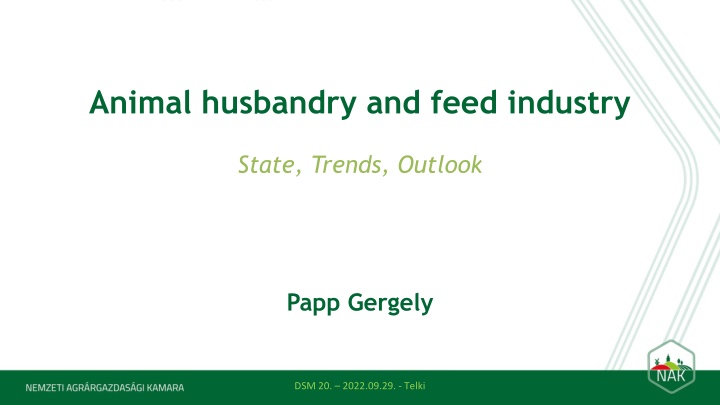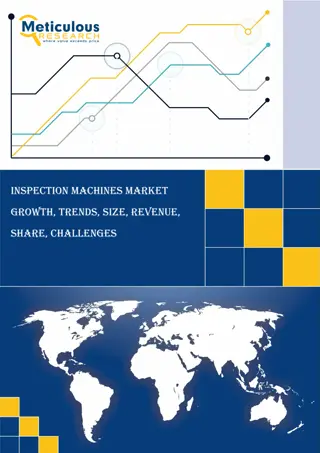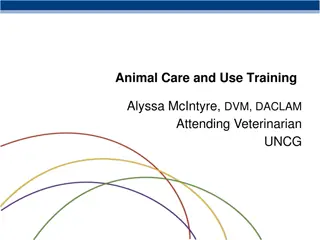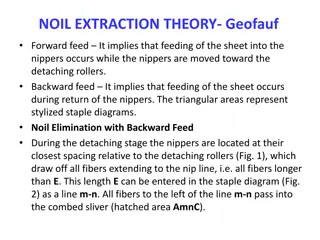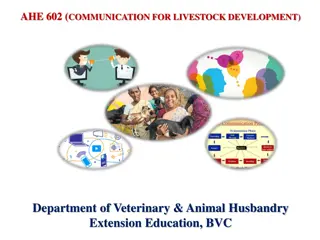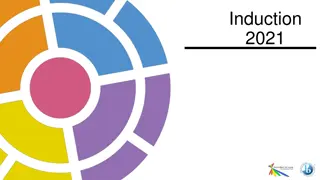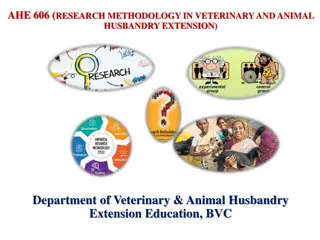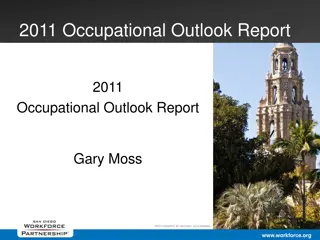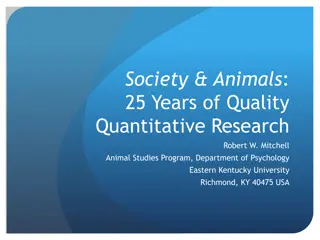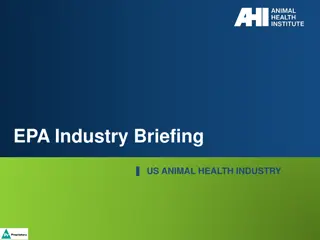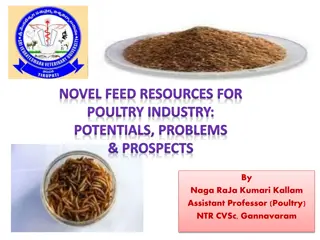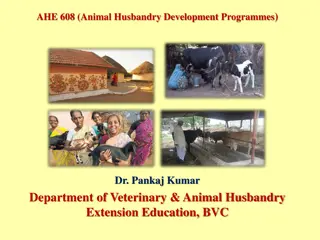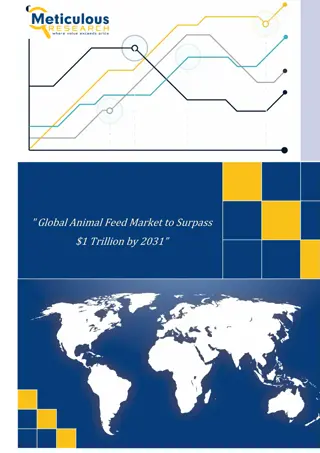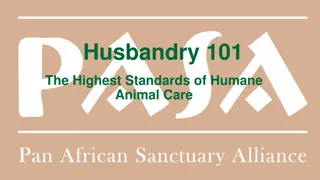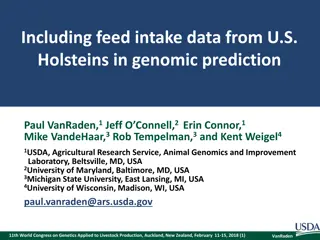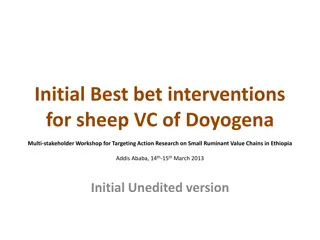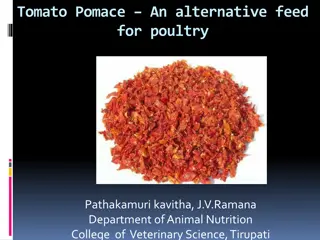Challenges in Animal Husbandry & Feed Industry Outlook
The animal husbandry and feed industry faces various challenges due to the Russian-Ukrainian war, input price explosion, epidemic animal diseases, and drought impact on livestock farmers. The war disrupts grain exports, causing food security threats and global hunger concerns. Additionally, energy market crises, diseases like African swine fever and bird flu, and severe drought further compound difficulties for livestock breeders. Addressing these challenges requires proactive measures and investments in biosecurity and practices.
Download Presentation

Please find below an Image/Link to download the presentation.
The content on the website is provided AS IS for your information and personal use only. It may not be sold, licensed, or shared on other websites without obtaining consent from the author.If you encounter any issues during the download, it is possible that the publisher has removed the file from their server.
You are allowed to download the files provided on this website for personal or commercial use, subject to the condition that they are used lawfully. All files are the property of their respective owners.
The content on the website is provided AS IS for your information and personal use only. It may not be sold, licensed, or shared on other websites without obtaining consent from the author.
E N D
Presentation Transcript
Animal husbandry and feed industry State, Trends, Outlook Papp Gergely DSM 20. 2022.09.29. - Telki
The effects of the Russian-Ukrainian war Two important grain producers are at war: Ukraine and the Russian Federation together account for about 30 percent of the world's grain exports. In addition to wheat, Ukraine is one of the largest exporters of barley, corn, sunflower and other oilseeds. (if the Black Sea ports are operating) Russia is a very significant fertilizer exporter. Disruptions in Russian fertilizer exports, as well as rising oil and gas prices, strongly increase fertilizer and food prices. Because of these, the war also threatens global food security (not in the EU, but in developing countries). According to the FAO, the number of hungry people in the world may increase by 8-13 million people. Not only does production become more expensive, but due to the rising costs of households, purchasing power also decreases throughout Europe.
Inputprice-explosion In Europe, the energy market crisis is also caused by the "boycott" of Russian energy carriers, the costs of not only livestock farmers, but also food processors have increased by orders of magnitude. The rise in feed prices has already started in the last two years. The lack of fodder grains and oilseeds lost from the European market due to the war clearly affects the animal species that eat graing (primarily pigs and poultry) the most sensitively... It is questionable whether, in such an inflationary environment, animal breeders and food processors will have a chance to pass on this price increase?
Epidemic Animal Deseases ASP, bird flu Due to the African swine fever present in the wild boar population in our country since 2018, as well as the recurring bird flu, we are losing out on well- paying export markets. Due to the spread of diseases in the EU, competition has increased in the internal market. In such circumstances, it is difficult to make the advantage that we provide high-quality, grain-based feed in these sectors pay for. The solution is clearly to increase biological safety with good practices, discipline and targeted epidemic prevention investments.
Livestock farmers are the real losers of the drought 1. This year, the vast majority of the country's territory was hit by a severe or high degree of drought. In addition to the losses experienced by the grain growers, a significant part of the corn crop was also destroyed, and our lawns were also burnt. The unprecedented drought does not only cause problems for plant growers. Livestock breeders are clearly the most endangered, since - in addition to the fact that last year was not successful for them either - the lack of fodder due to the drought in some places is so great that they will not be able to winterize their livestock without help. The problem is so complex that it cannot be solved simply by modifying the feed recipes - which will result in a decrease in efficiency anyway. And in some livestock sectors - just think of pond farms and fish farming - not only the price increase and availability of feed and other input materials cause problems, but the animals' habitat is also at risk.
Livestock farmers are the real losers of the drought 2. We are receiving news from several sectors about the decrease in slaughter weights, the reduction in the number of inseminations, and the number of advertisements for breeding animals for sale has increased. The signs already indicate that the number of domestic livestock will decrease, but the extent cannot yet be predicted. It must be clearly seen that those who end up keeping animals in their dire straits will probably never start again. It is likely that the decline will be temporary in several sectors: other, more efficiently producing economies will take over part of the lost production
Animal husbandry position Agriculture, including animal husbandry, is a strategic sector in Hungary: strong agriculture is unimaginable without animal husbandry and the production of animal products based on it. SHARE OF SECTORS IN GROSS OUTPUT Fruit and grape Both grain and fiber fodder are suitable for the adequate quality of fodder for livestock, which is one of the foundations of competitiveness. Poultry Other plants Service Cattle Vegetables Despite this, after the change of regime, the biggest decline in agriculture occurred in the animal husbandry sectors, many of them completely switched to the more profitable cultivation of field crops. Industrial plants Swine The share of determine the entire gross agricultural output, has now dropped below 35 percent. animal husbandry, which used to Other animals Grain Plant production 58,2% 60,0% 58,0% Animal husbandry 34,8% 33,0% 34,8% 2015 2016 2017
Animal husbandry position Currently, domestic livestock breeding is stagnating despite the subsidies provided to the sector, while the sector has significant untapped potential. In order to make much better use of the dormant production potential in the sector, continuous developmentand the practical application of domestic and international innovations are essential. More extreme weather due to climate change, epidemic animal diseases, growing social expectations - such as animal welfare and environmental protection - and limited resource bases pose ever-increasing challenges to the sector, so animal husbandry and food production based on it must meet greater demands than ever before. Our goal is to meet the challenges, Standing on strong feet in Hungary both professionally and administratively, be a well-organized and profitable animal husbandry.
Threats and opportunities Threats and opportunities - challenges and prospects With the correct recognition of trends and problems, professional collaboration and influencing/developing farming - and its conditions - the changes taking place around us can not only be a threat but also an opportunity Each livestock sector is subject to independent analysis, but there are common problems and similar solutions may exist
The Human factor Labor shortage Education, training One of the most pressing issues in animal husbandry is the labor shortage, even for jobs that do not require professional qualifications, but only training. Basically, two types of training are needed on the animal husbandry side, which would provide skilled sector workers and technicians with appropriate specialization. All other more "sophisticated" solutions overcomplicate and make training more expensive: Animal breeder vocational training on a full-time basis Animal breeding technician qualification supplemented with advanced theoretical foundations and high school diploma. The lack or inadequacy of secondary vocational training is a serious problem. One of the keys to reducing the labor shortage, which we talk about less, is the creation of decent working conditions and treatment, which would be the employer's task and only partially depends on the employer's financial capabilities. We have to help employers and employees in creating and launching them in Hungary (by presenting good practices, building career models, etc.) Obtaining additional qualifications as part of OKJ courses (beekeeper, farrier, etc.) The restructuring of higher vocational education will soon take place, in connection with which we consider it important to set up a mandatory practical training system for the teachers participating in agricultural education.
Development and R&D programs State Tasks As a result of the modernization that can also be felt in the agricultural and food economy, today's research, development and innovation activities are expected to open up opportunities that are completely separated from the current production technologies, structures and raw materials. Research that improves competitiveness and can be implemented with limited financial resources Development of research workshops, encouraging cooperation between institutions and professionals Genomics - genomic breeding value estimation Introducing precision breeding Effective implementation of a protein program Creation of a lawn action plan and lawn cadastre Collection, processing and sharing of good husbandry and animal health practices Reduction of ammonia emissions Antimicrobial resistance research Research Hungary are currently at a low level compared to other EU member states, competitiveness of the agricultural sector. Not all research institutions have the appropriate research infrastructure, but the lack of researchers and inadequate agricultural training also make the situation worse. and development expenditures in which hinders the
Market access measures Tasks Successful animal husbandry cannot be imagined without well-structured and implemented marketing programs, which, in addition to advertising the products produced during the production of goods, also facilitate the access of breeding animals to the market. Coordination of agricultural marketing activities Launching market research and marketing programs to help farm animals and animal products reach the market Targeted support for breeding animal exhibitions Transformation of OM K into a profession-focused event Preparing companies for market activity, including foreign market activity (market information, product training, financing) Development of a support system for financing PR and marketing costs
Animal health status Importance Tasks Good animal husbandry, animal health and epidemic prevention practices Priority protection against recurrent and highly damaging animal diseases (ASP, bird flu) Confirmed reorganization of the official veterinary service Review and completion of ongoing exemption programs (PRRS, IBR, leukosis, brucellosis, etc.), maintenance, initiation of new ones Continuous publication of animal health requirements, activities and results to farmers and consumers in order to strengthen trust. Humans (consumers) as a vector of some animal diseases: awareness and prevention Improving the animal health status of livestock is one of the key issues of our competitiveness. The subclinical presence of diseases significantly impairs the efficiency of production, which causes considerable economic damage to livestock keepers. In order to prevent diseases, improve animal health status and increase animal welfare, steps must be taken at the sector level. These measures are also important for the purpose of increasing the recognition of Hungarian livestock breeding and domestic consumption
Policy of subsidy In the current support structure, without EU funds, three- quarters of domestic farmers would be unprofitable. In the future, it is necessary to move away from this state so that these resources are used by producers to improve their competitiveness instead of survival. Instead of a quantitative approach, a qualitative approach should be enforced in the support policy. The way to do this is e.g. separation of animal-based subsidies into basic subsidies for commodity producers and advanced subsidies for livestock producers. Encouraging investments in the manufacturing industry (also with additional resources) in order to produce domestic products to the highest possible degree of processing (even ready-to-use and convenience products). In order to produce marketable products, market research related to market access measures is important. Supporting young farmers and the generational change remains of paramount importance Creating a regulatory environment aimed at speeding up the assessment of Rural Development Tenrers applications and bank loans. (The long evaluation times also mean serious uncertainty and financing problems for some actors.) Providing high-level national resources to animal breeders. The possibility of subsidizing the poultry and pig sectors must be reconsidered and resolved. Continuation of investment subsidies, paying special attention to developments that promote and encourage the use of technologies and husbandry methods that increase animal welfare and reduce environmental impact. Priority national co-financing of rural development subsidies is a huge opportunity that must be exploited
Adequate regulatory environment Taxation Income security A complex system must also be developed and launched in the animal husbandry sector, which, in addition to service-oriented insurance, creates the basis for the self-care of producers and processors and the income security of workers in the sector. The renewal of premium-subsidized pet insurance and the establishment of a self- care fund based on it and operating alongside it. It is essential to develop and launch a complex risk management system in the livestock and processing sectors. Maintaining the state's assumption of official fees affecting animal breeders and the processing industry. VAT reduction: continuation of the VAT reduction of live animals and basic foodstuffs to 5 percent. Reducing the employer's contribution for livestock workers (so that the savings can be paid as wages)
Social pressures on animal production pathways and their products The ecological footprint of animal husbandry Scandals (counterfeit products, fraud, black economy, animal diseases) A false image of the conditions of animal husbandry and its increasingly strict regulation Oversizing the health problems associated with (excessive) meat and milk consumption The rise in popularity of veganism Growing expectations of the countryside, contrast between countryside and city Ignorance of modern technology procedures, their misunderstanding. Stricter regulation of transport conditions Modification of certain rules related to animal health procedures Expectations related to the intoxication technologies used before slaughter
Consumer reservations and expectations related to animal product lines and their products The production conditions must be ethical and animal-friendly, and the consumer can be convinced of this. The ecological footprint of production should be as small as possible. The product should be healthy, with as few additives as possible. The product should be fresh, but maintain its quality for as long as possible. The product must be safe. The product should be tasty. Preparation of the product before consumption should take as little time as possible. The possibility of full information about the ingredients of the product and the method of production should be provided. The geographical origin of the product's raw materials should be known. The product range should give you the opportunity to meet the needs arising from different lifestyles (religious, health- based needs, etc.). The product should be cheap. Both animal husbandry and processing companies and their products must meet these expectations in order to be successful in the market.
